

2) Transgressive Systems Tract (TST)
Transgressive sands have long been a favorite target in HC exploration
a) Sands are reworked and well sorted by coastal processes. Reservoir quality sands vary from good to poor, depending upon grain size and cementation and tend to be parallel to the ancient coastline ;
b) The continuity of transgressive sands is typically good along depositional strike, but may vary in the depositional dip direction ;
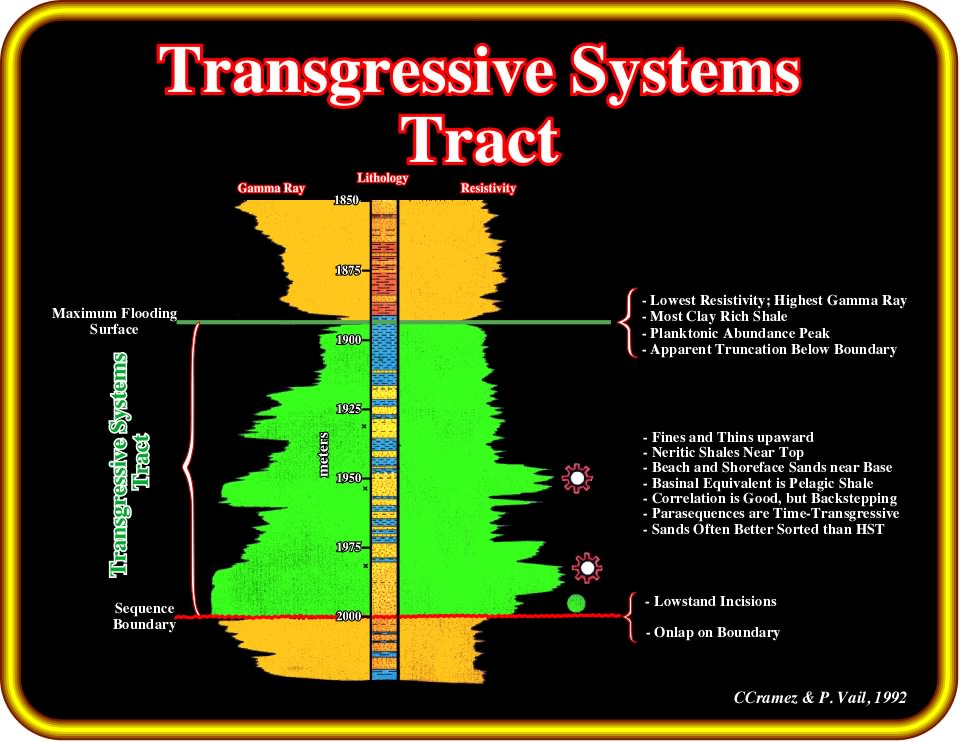
Plate 463- The main characteristics and the log patterns of a transgressive systems tract are summarized here. The lower limit of a transgressive systems tract is generally a flooding surface (1st transgressive surface), but, in certain geological conditions, it can be a sequence cycle boundary. The upper limit is generally a maximum flooding surface, but a sequence cycle boundary cannot be excluded, particularly when a relative sea level fall takes place following an expected tectonic event.
c) The backstepping nature of transgressive deposits tends to produce interbedded sands and shales in a terrigeneous clastic environment and packstones and mudstones in a carbonate environment. Multiple pay reservoirs may result. Reservoir units are interbedded with potential hydrocarbon source units ;
d) Because of their degree of interbedding and their onlapping nature updip pinchouts may also produce stratigraphic entrapment of transgressive reservoir sands ;
e) Transgressive systems tract sediments tend to be overlain by a continuous shale seal that may also be a hydrocarbon source, i.e., the condensed section ;
f) If high sediment discharge rates coincide with moderate rates of marine onlap, then braided stream deposits may cover all or portions of the exposed shelf during lowstand and early transgressive systems tracts time. This can provide an excellent sheet reservoir sand.
g) If marine onlap extends high on the shelf and thereby encroaches the area where alluvial fan deposits formed during late highstand time, the alluvial gravels may be reworked by coastal processes. The resulting coarse clastic sands are of reservoir quality because they are winnowed clean of their fine fraction by wave and current action.
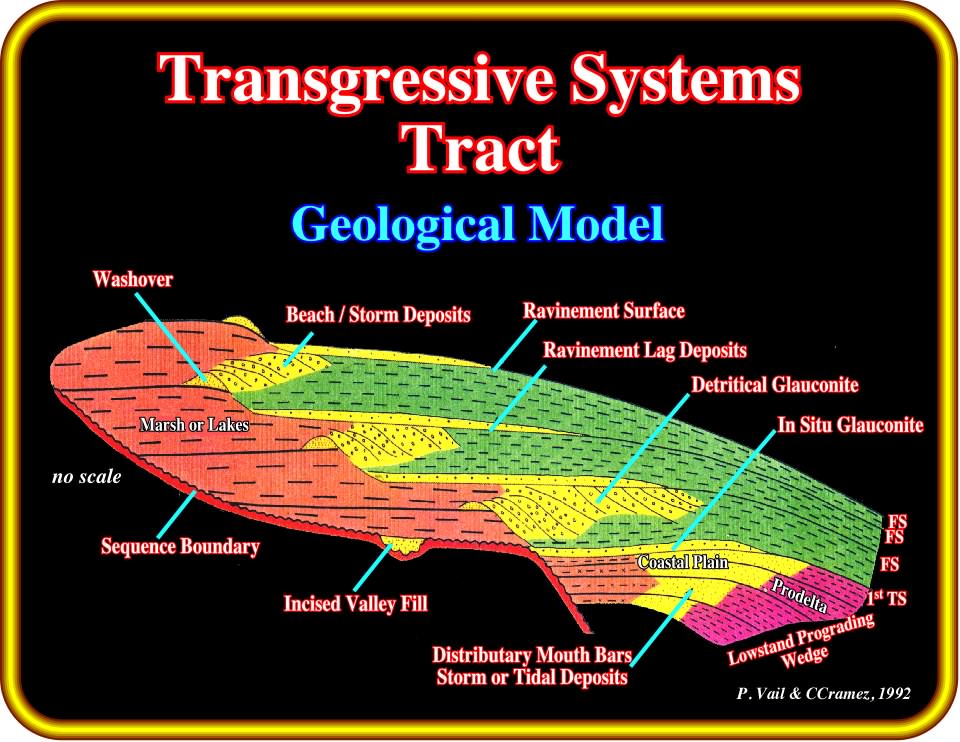
Plate 464- On this geological model of a transgressive systems tract, it is quite important to notice that the backstepping (retrogradational) geometry is in fact a stacking of regressive episodes that progressively prograde less and less. At each sea level rise increment (flooding), the depositional coastal break (roughly the shoreline) is displaced far away landward, creating at the top of the deposited sediments a ravinment surface. Then, as sediments are deposited, the depositional coastal break is progressively displaced seaward, but without reaching the position that it had before the rise of sea level took place. A new increment of sea level rise increases the shelf accommodation displacing again the depositional coastal break landward and creating another ravinment surface. Then, again, deposition takes place and the depositional coastal break is progressively displaced seaward, ..... and so forth.
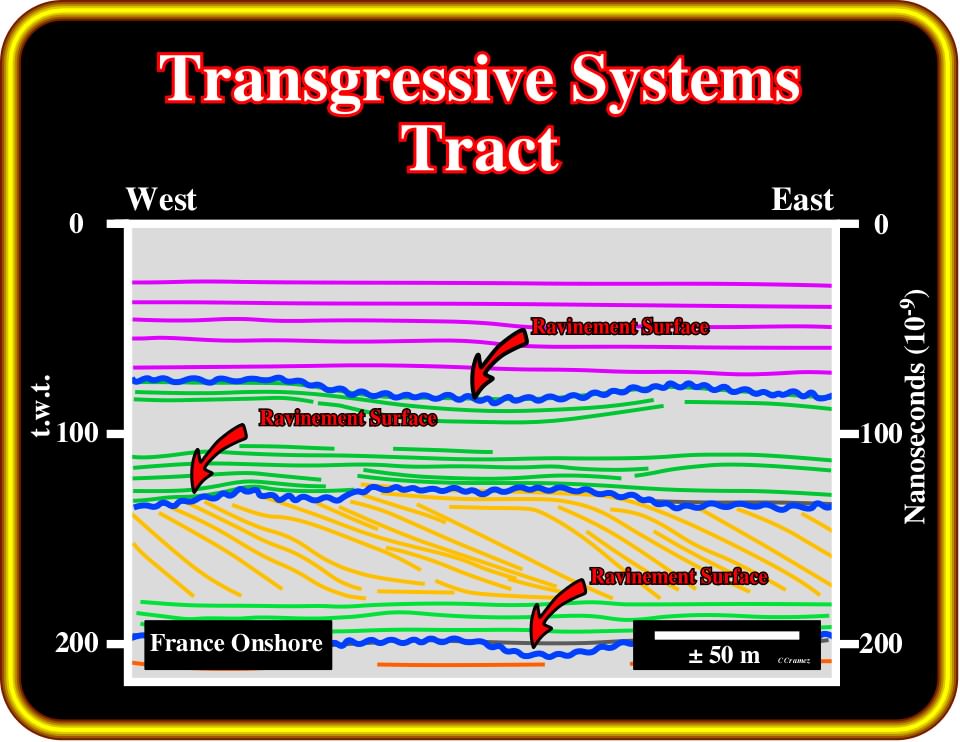
Plate 465- On this tentative interpretation of a geo-radar line from onshore France (notice that the vertical time scale is in nanoseconds, that is to say, 10-9 seconds), ravinment surfaces are clearly recognized in association with flooding surfaces. During a transgressive systems tract, at each relative sea level rise increment, the base level erodes the sea floor before being overlain by progradational sediments.
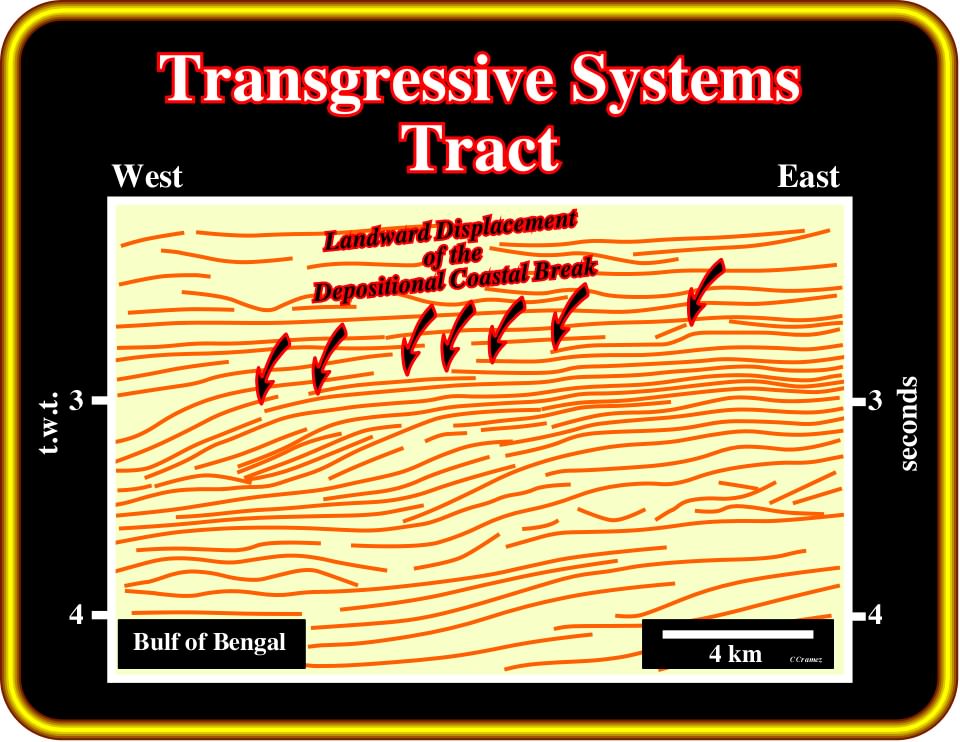
Plate 466- On this first step tentative interpretation of seismic line, from the Gulf of Bengal, above a progradational interval, in which successive relative sea level falls induced the seaward deposition of different lowstand prograding wedges or shelf margin systems, a transgressive systems tract was deposited. The recognition of this transgressive systems tract can be based on the retrogradational displacements of the depositional coastal break, which creates a backstepping geometry. Such geometry implies the progressive development of a shelf environment as the depositional coastal break, individualized from the shelf break, and progressively displaced landward.
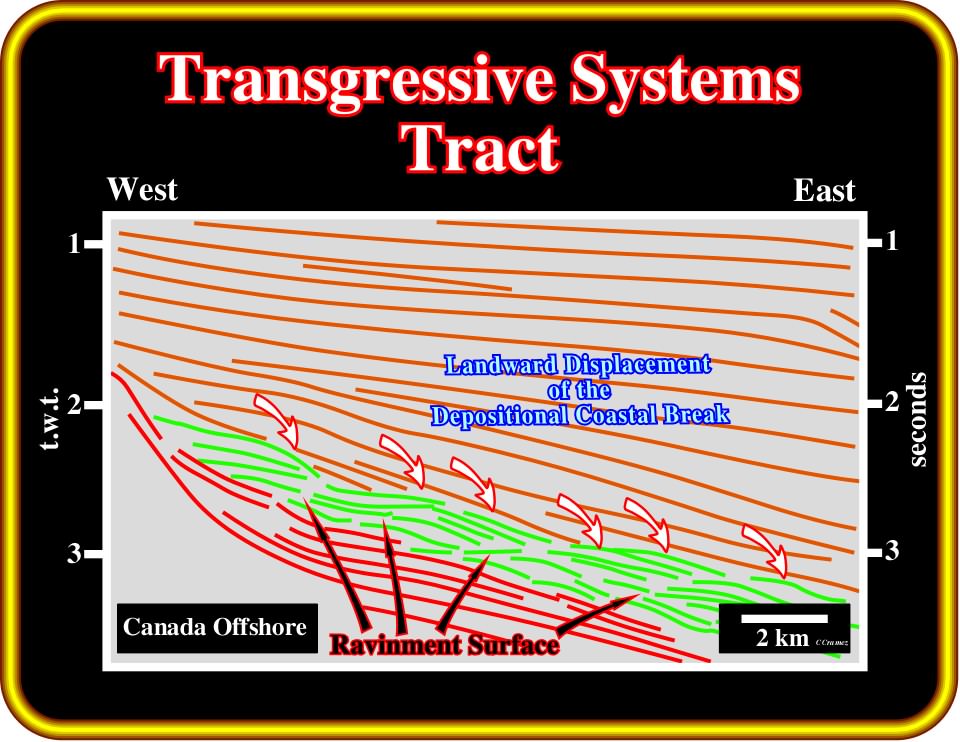
Plate 467- On this tentative interpretation of a seismic , from offshore Labrador, that you already saw twice, a transgressive systems tract is easily recognized by the progressive landward displacement of the depositional coastal break. Actually, it is this displacement that allows geologists to say that transgressive systems tracts thicken landward before onlapping against the lower sequence-cycle boundary.
Exploration Applications:
1) Reservoir :
- Beach-shoreface ;
- Excellent porosity and permeability ;
- Predictable linear trends.2) Migration :
- Typically downward and laterally within TST.
3) Source :
- Good on top and laterally.
4) Trap :
- Stratigraphic traps in isolated sands ;
- Continuous basal reservoirs require a structural trap.5) Seal :
- Good top ;
- Variable laterally and on base.
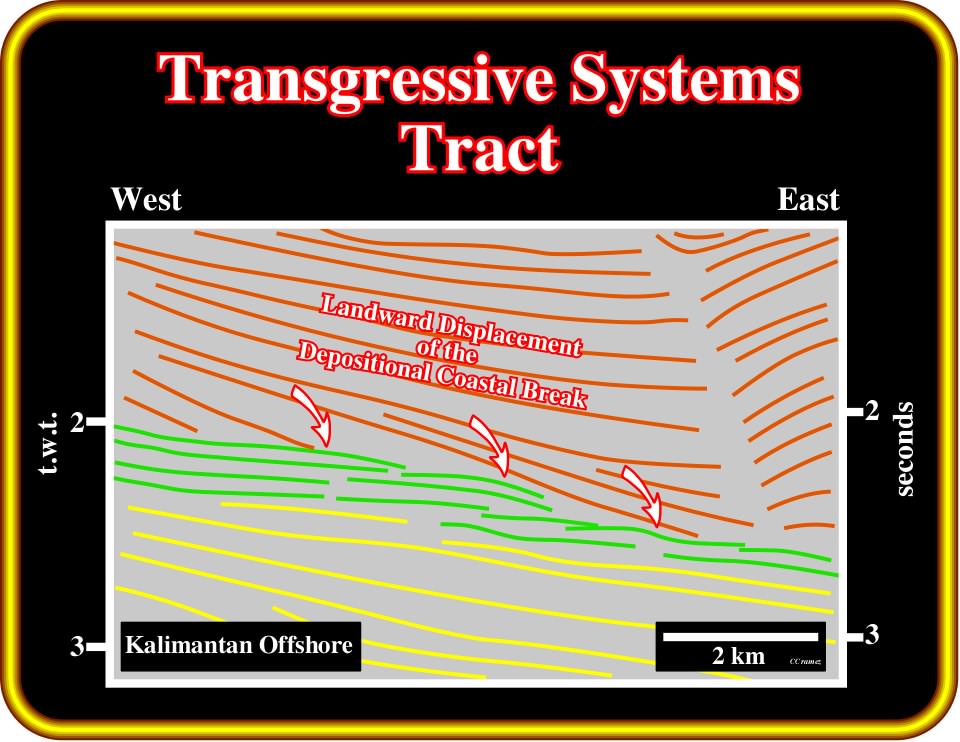
Plate 468- This tentative interpretation (offshore East Borneo) is often used to show that explorationists cannot correctly interpret a seismic line, in geological terms, when they don’t know Geology and particularly the depositional geological models. In this particular example, an explorationist with a poor knowledge in Geology is going to propose an interpretation in which a reflector is faulted by two normal faults. On the contrary, an explorationist knowing what he is doing readily recognizes a transgressive systems tract, thickening westward as the depositional coastal break is displaced landward. Explorationists recognize on a seismic line just what they know.
Exercises:

Plate 469- On this seismic line, start by recognizing the uppermost unconformity, which is the lower boundary of a sequence cycle formed, in this part of the basin, by a transgressive systems tract and a highstand systems tract. Then, pick the transgressive and highstand systems tracts. In what direction is the transgressive systems tract thickening? What are the red arrows supposed to underline? Do you think that there is an incised valley fill associated with the lower sequence cycle boundary? If you answer yes, with which systems tract do you associate it?
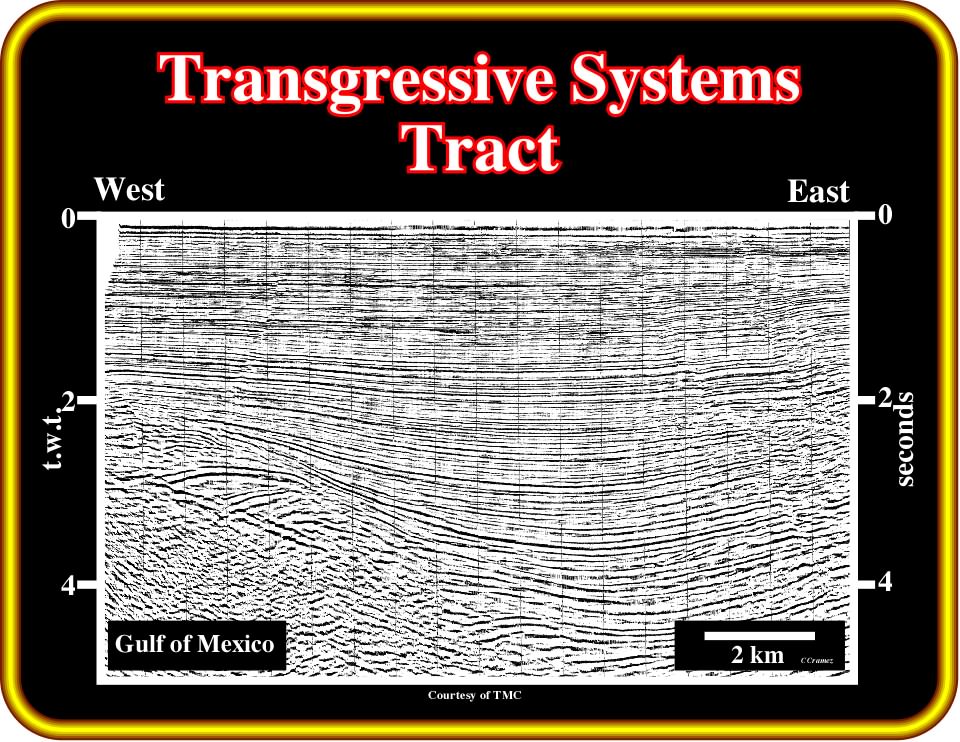
Plate 470- Making a sequential analysis of this seismic line coming from the conventional offshore of the Gulf of Mexico, you can easily recognize the most likely geological settings developed above the salt weld (tectonic disharmony created by total salt expulsion). Where is the most evident transgressive systems tract? Is the sediment supply high or low? Do you see some turbidite deposits? If yes locate them?
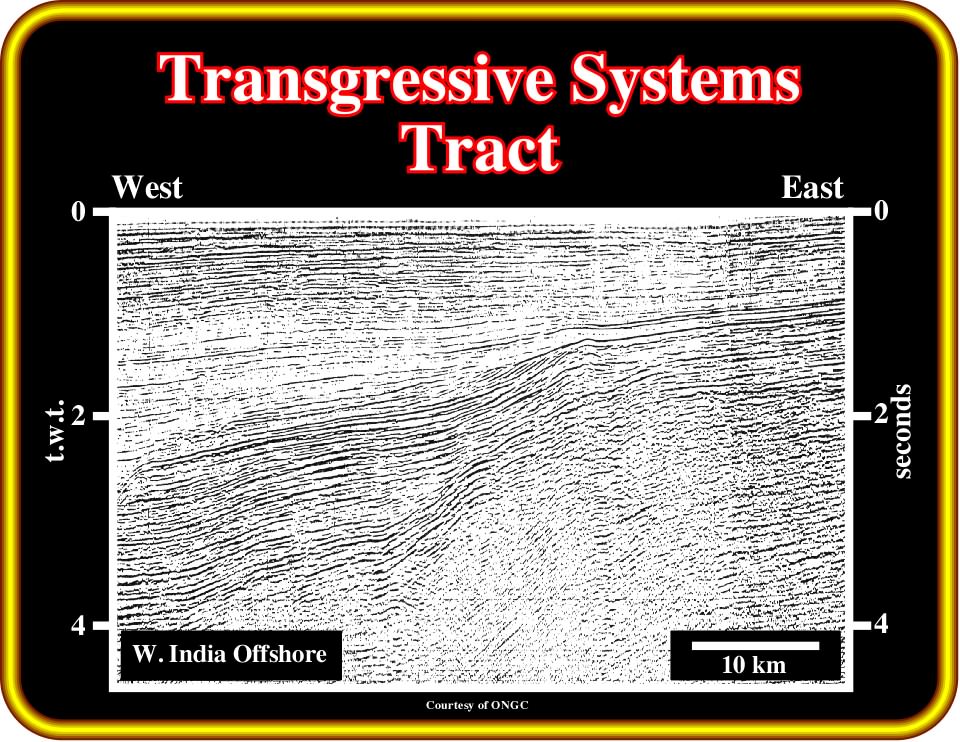
Plate 471 - Pick the more obvious transgressive systems tracts. Then, indicate in what direction the associated depositional systems are thickening. Finally, locate two lowstand prograding wedges.
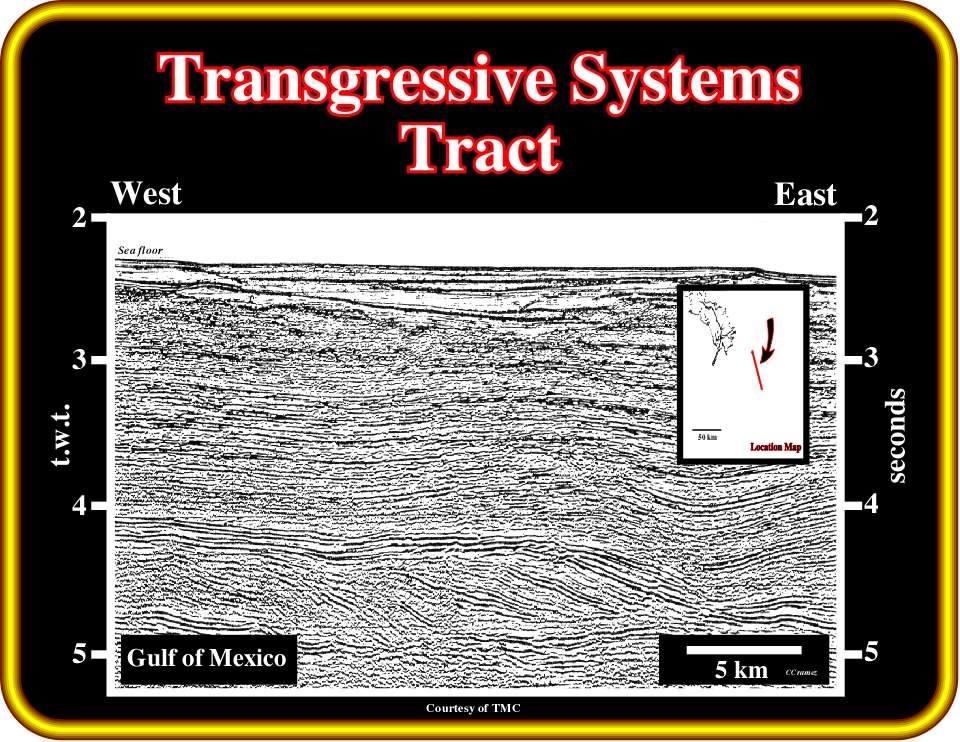
Send E-mail to carloscramez@gmail.com with questions or comments about these notes (Seismic-Sequential Stratigraphy).Plate 472- Knowing that in the Gulf of Mexico, as well as in the majority of petroleum basins, the potential marine source-rocks are associated with the major post-Pangea downlap surface, can you locate them on this line? At which systems tract do they belong? Explain the geometry of the reflection terminations between 4 and 5 seconds. Specifically, are the reflection terminations downlap? Justify your answer.